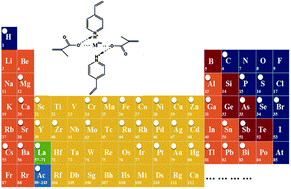Current status and challenges of ion imprinting
Abstract
Ion imprinting technology (IIT) aims to recognize ions while retaining the unique virtues of molecular imprinting technology (MIT), namely structure predictability, recognition specificity and application universality. Owing to special coordination or electrostatic interactions, ion imprinted polymers (IIPs) are generally compatible with aqueous media and have advantages over most molecularly imprinted polymers (MIPs). IIPs can achieve effective identification of water-soluble ions, especially heavy metals and radioactive elements that cause increasing concerns. The purpose of this review is to summarize recent advances of ion imprinting, focusing on the current status and challenges in fundamentals and applications that involve almost all types of ions and ion-related molecular imprinting. In addition, various smart strategies are highlighted, such as surface imprinting, stimuli-responsive imprinting, dual/multiple components imprinting, click chemistry, and microwave-assisted heating. In this review, the elemental periodic table is first utilized as a template to introduce ion classification standards for various IIPs, including main groups, transition elements, actinides, rare earths, metalloids, anion imprinting and secondary imprinting. Finally, the challenges and possible solution strategies plus future trends are also proposed (302 references).



 Please wait while we load your content...
Please wait while we load your content...